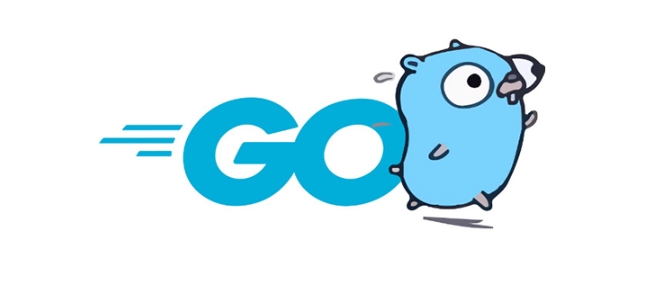In Go, the methods of using generics to implement stacks and queues are as follows: 1. Define a structure containing any type of slices; 2. Write Push, Pop, and IsEmpty methods for the stack; 3. Write Enqueue, Dequeue, and IsEmpty methods for the queue; 4. Choose the appropriate data structure according to performance requirements. Generics enable type-safe and reusable stacks and queues, suitable for non-high performance scenarios.

In Go, implementing a generic stack or queue used to be a bit of a pain because the language didn't support generics until version 1.18. But now with generics (using type parameters), you can build reusable and type-safe stacks or queues without duplicating code for each data type.

Here's how to do it in a clean, modern way.

Using Generics to Define a Stack
A stack follows the LIFO (Last In, First Out) principle. You push items onto the top and pop them from the top.
To make a generic stack, define a struct that holds a slice of any type ( []T ), then write methods like Push , Pop , and IsEmpty .

type Stack[T any] struct {
Items []T
}
func (s *Stack[T]) Push(item T) {
s.items = append(s.items, item)
}
func (s *Stack[T]) Pop() (T, bool) {
var zero T
if len(s.items) == 0 {
return zero, false
}
index := len(s.items) - 1
item := s.items[index]
s.items = s.items[:index]
return item, true
}
func (s *Stack[T]) IsEmpty() bool {
return len(s.items) == 0
}You can now use this stack with any type:
stack := &Stack[int]{}
stack.Push(10)
stack.Push(20)
val, ok := stack.Pop() // val = 20, ok = true Note: Always check the ok return value when popping, just like with maps — it tells you whether the pop was successful.
Implementing a Generic Queue
A queue works on FIFO (First In, First Out). Items go in one end and come out the other.
There are different ways to implement a queue. One simple and effective way is using a slice again, but with Enqueue at the end and Dequeue from the front.
type Queue[T any] struct {
Items []T
}
func (q *Queue[T]) Enqueue(item T) {
q.items = append(q.items, item)
}
func (q *Queue[T]) Dequeue() (T, bool) {
var zero T
if len(q.items) == 0 {
return zero, false
}
item := q.items[0]
q.items = q.items[1:]
return item, true
}
func (q *Queue[T]) IsEmpty() bool {
return len(q.items) == 0
}Use it like this:
queue := &Queue[string]{}
queue.Enqueue("hello")
queue.Enqueue("world")
val, ok := queue.Dequeue() // val = "hello", ok = true This works fine for small examples, but keep in mind that slicing from the front ( items[1:] ) copies the underlying array. If performance matters, consider using a linked list or a ring buffer.
Performance Considerations
If you're working with large amounts of data or high-frequency operations, there are some efficiency points to note:
- Slices as stacks are efficient because appending and popping from the end are O(1) amortized operations.
- Slices as queues are less optimal because removing from the front involves copying the slice.
For better performance in queues:
- Use a linked list (like
container/list) - Or use a circular buffer with fixed size
- Or use channels (only if you want blocking behavior)
But if your use case isn't performance-critical, sticking with slices is perfectly fine.
Summary
With Go's generics, writing reusable data structures like stacks and queues has become much cleaner and safer. Just define a type parameter T any , use slices or other containers inside your struct, and write the core logic once.
It's not super fancy, but it works well and keeps your code DRY.
Basically that's it.
The above is the detailed content of How to implement a generic stack or queue in golang. For more information, please follow other related articles on the PHP Chinese website!

Hot AI Tools

Undress AI Tool
Undress images for free

Undresser.AI Undress
AI-powered app for creating realistic nude photos

AI Clothes Remover
Online AI tool for removing clothes from photos.

Clothoff.io
AI clothes remover

Video Face Swap
Swap faces in any video effortlessly with our completely free AI face swap tool!

Hot Article

Hot Tools

Notepad++7.3.1
Easy-to-use and free code editor

SublimeText3 Chinese version
Chinese version, very easy to use

Zend Studio 13.0.1
Powerful PHP integrated development environment

Dreamweaver CS6
Visual web development tools

SublimeText3 Mac version
God-level code editing software (SublimeText3)

Hot Topics
 What are the implications of Go's static linking by default?
Jun 19, 2025 am 01:08 AM
What are the implications of Go's static linking by default?
Jun 19, 2025 am 01:08 AM
Go compiles the program into a standalone binary by default, the main reason is static linking. 1. Simpler deployment: no additional installation of dependency libraries, can be run directly across Linux distributions; 2. Larger binary size: Including all dependencies causes file size to increase, but can be optimized through building flags or compression tools; 3. Higher predictability and security: avoid risks brought about by changes in external library versions and enhance stability; 4. Limited operation flexibility: cannot hot update of shared libraries, and recompile and deployment are required to fix dependency vulnerabilities. These features make Go suitable for CLI tools, microservices and other scenarios, but trade-offs are needed in environments where storage is restricted or relies on centralized management.
 How does Go ensure memory safety without manual memory management like in C?
Jun 19, 2025 am 01:11 AM
How does Go ensure memory safety without manual memory management like in C?
Jun 19, 2025 am 01:11 AM
Goensuresmemorysafetywithoutmanualmanagementthroughautomaticgarbagecollection,nopointerarithmetic,safeconcurrency,andruntimechecks.First,Go’sgarbagecollectorautomaticallyreclaimsunusedmemory,preventingleaksanddanglingpointers.Second,itdisallowspointe
 How do I create a buffered channel in Go? (e.g., make(chan int, 10))
Jun 20, 2025 am 01:07 AM
How do I create a buffered channel in Go? (e.g., make(chan int, 10))
Jun 20, 2025 am 01:07 AM
To create a buffer channel in Go, just specify the capacity parameters in the make function. The buffer channel allows the sending operation to temporarily store data when there is no receiver, as long as the specified capacity is not exceeded. For example, ch:=make(chanint,10) creates a buffer channel that can store up to 10 integer values; unlike unbuffered channels, data will not be blocked immediately when sending, but the data will be temporarily stored in the buffer until it is taken away by the receiver; when using it, please note: 1. The capacity setting should be reasonable to avoid memory waste or frequent blocking; 2. The buffer needs to prevent memory problems from being accumulated indefinitely in the buffer; 3. The signal can be passed by the chanstruct{} type to save resources; common scenarios include controlling the number of concurrency, producer-consumer models and differentiation
 How can you use Go for system programming tasks?
Jun 19, 2025 am 01:10 AM
How can you use Go for system programming tasks?
Jun 19, 2025 am 01:10 AM
Go is ideal for system programming because it combines the performance of compiled languages ??such as C with the ease of use and security of modern languages. 1. In terms of file and directory operations, Go's os package supports creation, deletion, renaming and checking whether files and directories exist. Use os.ReadFile to read the entire file in one line of code, which is suitable for writing backup scripts or log processing tools; 2. In terms of process management, the exec.Command function of the os/exec package can execute external commands, capture output, set environment variables, redirect input and output flows, and control process life cycles, which are suitable for automation tools and deployment scripts; 3. In terms of network and concurrency, the net package supports TCP/UDP programming, DNS query and original sets.
 How do I call a method on a struct instance in Go?
Jun 24, 2025 pm 03:17 PM
How do I call a method on a struct instance in Go?
Jun 24, 2025 pm 03:17 PM
In Go language, calling a structure method requires first defining the structure and the method that binds the receiver, and accessing it using a point number. After defining the structure Rectangle, the method can be declared through the value receiver or the pointer receiver; 1. Use the value receiver such as func(rRectangle)Area()int and directly call it through rect.Area(); 2. If you need to modify the structure, use the pointer receiver such as func(r*Rectangle)SetWidth(...), and Go will automatically handle the conversion of pointers and values; 3. When embedding the structure, the method of embedded structure will be improved, and it can be called directly through the outer structure; 4. Go does not need to force use getter/setter,
 What are interfaces in Go, and how do I define them?
Jun 22, 2025 pm 03:41 PM
What are interfaces in Go, and how do I define them?
Jun 22, 2025 pm 03:41 PM
In Go, an interface is a type that defines behavior without specifying implementation. An interface consists of method signatures, and any type that implements these methods automatically satisfy the interface. For example, if you define a Speaker interface that contains the Speak() method, all types that implement the method can be considered Speaker. Interfaces are suitable for writing common functions, abstract implementation details, and using mock objects in testing. Defining an interface uses the interface keyword and lists method signatures, without explicitly declaring the type to implement the interface. Common use cases include logs, formatting, abstractions of different databases or services, and notification systems. For example, both Dog and Robot types can implement Speak methods and pass them to the same Anno
 How do I use string functions from the strings package in Go? (e.g., len(), strings.Contains(), strings.Index(), strings.ReplaceAll())
Jun 20, 2025 am 01:06 AM
How do I use string functions from the strings package in Go? (e.g., len(), strings.Contains(), strings.Index(), strings.ReplaceAll())
Jun 20, 2025 am 01:06 AM
In Go language, string operations are mainly implemented through strings package and built-in functions. 1.strings.Contains() is used to determine whether a string contains a substring and returns a Boolean value; 2.strings.Index() can find the location where the substring appears for the first time, and if it does not exist, it returns -1; 3.strings.ReplaceAll() can replace all matching substrings, and can also control the number of replacements through strings.Replace(); 4.len() function is used to obtain the length of the bytes of the string, but when processing Unicode, you need to pay attention to the difference between characters and bytes. These functions are often used in scenarios such as data filtering, text parsing, and string processing.
 How do I use the io package to work with input and output streams in Go?
Jun 20, 2025 am 11:25 AM
How do I use the io package to work with input and output streams in Go?
Jun 20, 2025 am 11:25 AM
TheGoiopackageprovidesinterfaceslikeReaderandWritertohandleI/Ooperationsuniformlyacrosssources.1.io.Reader'sReadmethodenablesreadingfromvarioussourcessuchasfilesorHTTPresponses.2.io.Writer'sWritemethodfacilitateswritingtodestinationslikestandardoutpu






